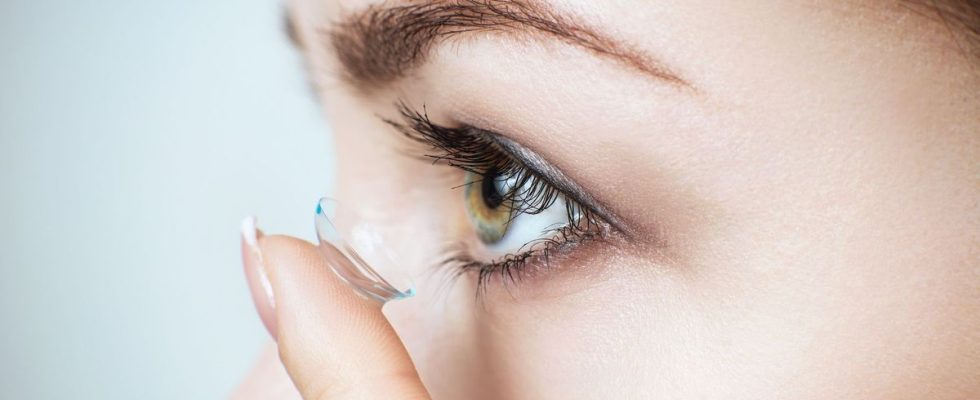Published on
Updated
Reading 3 mins.
According to an American study, 18 major brands of contact lenses contain a high level of PFAS, “so-called eternal pollutants”. Lenses, some references of which are marketed in France.
Faced with chemical pollutants, our eyes are not immune. According to information reported by The Guardian on May 9, 18 references of contact lenses would indeed be contaminated by carcinogenic chemicals, PFAS, or eternal pollutants. A disturbing discovery for daily wearers.
100% of the lenses analyzed contained PFAS
The tests were thus ordered by American public health blogs called mamavation And Environmental Health News, and were conducted on 18 references of soft contact lenses, in a laboratory certified by the United States Environmental Protection Agency. The presence of PFAS was sought. According to the agency:
- 100% of contact lenses sent to our EPA certified lab had indications of forever toxic PFAS chemicals. 18 soft eye contact lens products had detections of organic fluorine, a marker of PFAS. Organic fluorine ranges reported by the lab were 105 to 20,700 parts per million (ppm);
- 22% of contact lenses tested contained more than 18,000 parts per million (ppm) of organic fluoride. That’s 4 out of 18 products;
- 44% of contact lenses tested contained more than 4,000 parts per million (ppm) of organic fluoride. That’s 8 out of 18 products;
Consequently, the most popular eye contact brands – Acuvue, Alcon and Coopervision – which are also found in France, have all been found to have “eternal pollutant” indications at different levels.
A suprise ? Yes and no. According the mamavation blog, companies rarely disclose when they use PFAS because the federal government allows them to claim it as a trade secret. Chemicals are also so widely used that they can be unintentionally added to products throughout the supply chain. They would therefore be more common than we think.
What is the risk of PFAS on our eyes?
Still, the effect of these PFAS is problematic, especially at such levels. According to the ANSES website, “The effects on health, the toxicity of these chemical compounds is multiple: they cause an increase in cholesterol levels, can lead to cancers, cause effects on fertility and the development of the fetus. They are also suspected of interfering with the endocrine (thyroid) and immune system.”
The actual health effects of PFAS on contact lens wearers are not yet known, as no studies have been done on how the eyes absorb PFAS from contact lenses. But on his site, Pete Myers, head of Environmental Health News, worries:
“We may not be able to tell you if or how much PFAS will enter the body from exposure to the eyeball, but we do know that exposure to PFAS is possible based on some studies looking at the dermal exposure in animals”. Before adding that the presumption that these levels of organic fluoride measured in contact lenses are safe is laughable. “It should be noted that all contact lenses tested exceeded 100 ppm, which is equivalent to 100,000,000 ppt, or 50,000 times higher than the highest level deemed safe in drinking water by the Environmental Protection Agency. the environment of the United States” emphasizes Pete Myers.
Contacted on the subject, Dr. Clémence Bonnet, ophthalmologist specializing in corneal diseases, admits to learning the presence of these PFAS on reading the article, in particular in the three references sold in France:
“We knew that these lenses were made of plastic substances that allow better oxygenation of the cornea, while minimizing the risk of infection, but the knowledge of the presence of PFAS is new.”
There is concern, even if the doctor invites us to take the information with a step back:
“You still have to say that these soft contact lenses have been on the market for years. To my knowledge there has been no increase in cancer, or infection of the conjunctiva and anatomical structures close to the lens. But the problem with PFAS, whether in the eye or elsewhere, is that they are pro-carcinogenic products whose long-term effect is unknown. It is not known here if they are absorbed by the body, or eliminated by tears, we have no feedback yet”.
If in doubt, the patient may also want to change the device in the face of this news. However, Dr. Bonnet reminds worried patients that alternatives are possible: a return to glasses, a return to rigid lenses that do not contain PFAS, or even refractive surgery to no longer wear correction, after an assessment made by his ophthalmologist.
